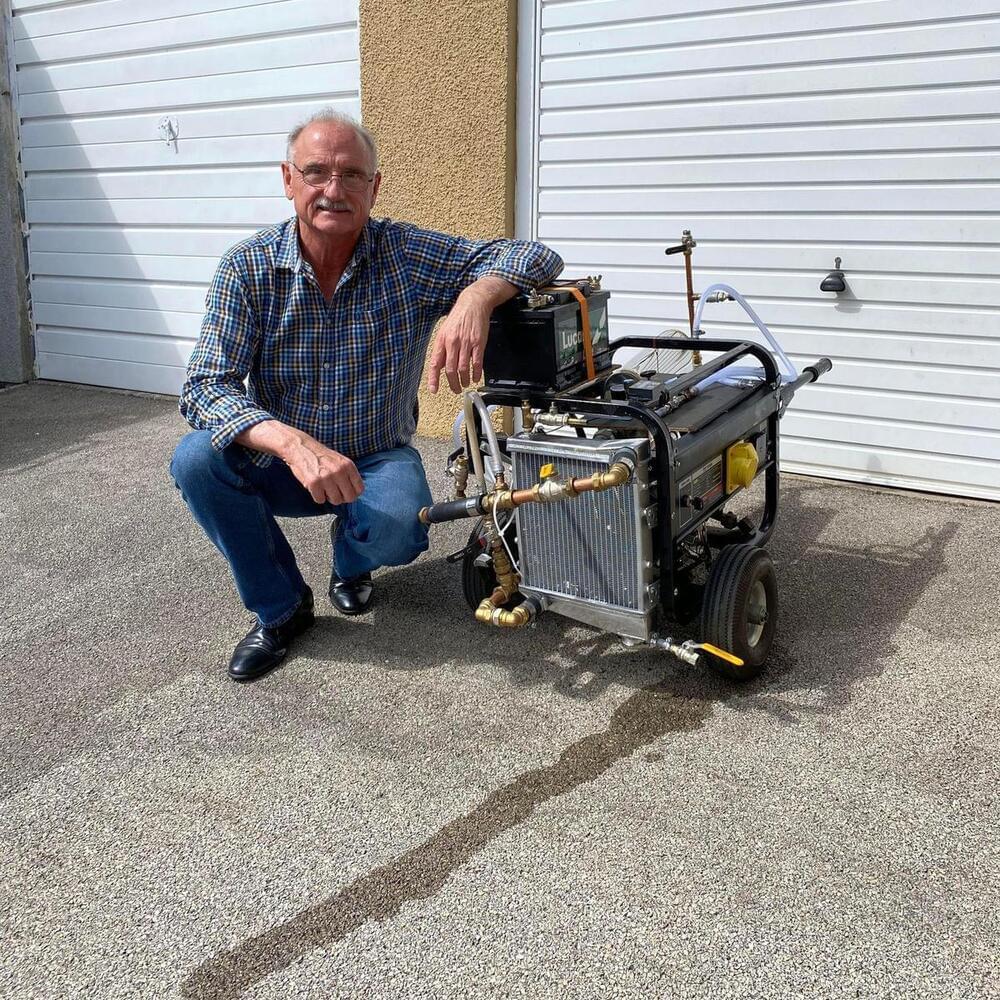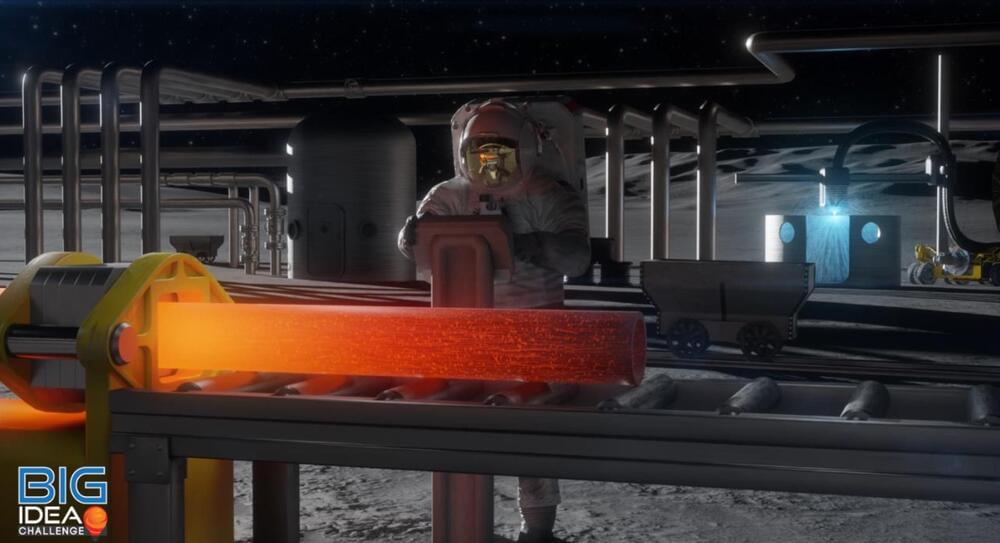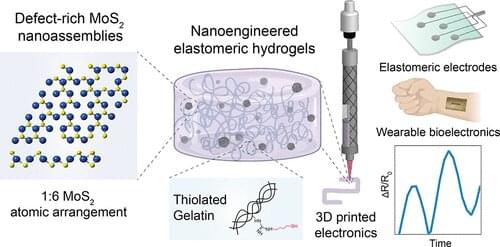The ‘waveline magnet’ is a modular, lightweight, and low-cost energy converter that seamlessly follows wave movement in any water environment.



I interviewed the gentleman talked about in this article yesterday. If his invention is what he says it is, deploying it to convert the existing inventory of billions of internal combustion engines would get us to net-zero emissions a lot faster.
A POWYS inventor has unveiled a zero-emissions internal combustion engine, which he says could be a game-changer in the fight against climate change.
The start of the Moon base begins with the Lunar Space Station going online. This is where Elon Musk’s SpaceX Lunar Starship, the HLS (Human Landing System) docks — picking up astronauts to take to the Lunar surface.
It only takes 3 days to reach the Moon. So technological development happens rapidly. From Lunar dust shields, a crater telescope, and a Boring Company tunnel digger digging out lava tubes for Lunar habitats, to a Lunar railroad using levitating cargo robots.
Additional footage from: NASA, ESA, SpaceX, ESA + Foster and Partners, Vladimir Vustyansky, ESO/M. Kornmesser, Relativity Space.
Thumbnail Credit (Used with Written Permission) — ICON and SEArch+
A Lunar Colony and Moon Base sci-fi documentary, and timelapse look into the future of living on the Moon.
See more of Venture City at my website: https://vx-c.com.
_______

Protons, once thought to be fundamental particles, have been known since 1968 to instead be composed of quarks. Some quarks are actually heavier than protons, but this wasn’t considered a problem because protons were thought to be made up purely of light quarks – two up and one down quark to be precise. However, new research shows protons also contain charm quarks, which are indeed heavier than protons, like a pot holding a bigger pot inside it.
“That goes against all common sense,” said Dr Juan Rojo of Vrije Universiteit Amsterdam in a statement. “It’s like buying a one-kilogram pack of salt, which then comes out two kilograms of sand.”
However, anyone highly attached to common sense dropped out of quantum mechanics courses in the first six weeks, so Rojo and co-authors were undeterred. In Nature they have revealed that less than one percent of the proton’s mass comes from quarks heavier than the proton.


The Brain Chemical Involved in Consciousness
So how do we help these people? The brain is more than just a congregation of different areas. Brain cells also rely on a number of chemicals to communicate with other cells, enabling a number of brain functions. Before our study, there was already some evidence that dopamine, well known for its role in reward, also plays a role in disorders of consciousness.
For example, one study showed that dopamine release in the brain is impaired in minimally conscious patients. Moreover, a number of small-scale studies have shown that patients’ consciousness can improve by giving them drugs that act through dopamine.
Nuclear winter visualizations made by Prof. Max Tegmark using state-of-the-art simulation data from these science papers:
* Lili Xia, Alan Robock, Kim Scherrer, Cheryl Harrison, Benjamin Bodirsky, Isabelle Weindl, Jonas Jägermeyr, Charles Bardeen, Owen Toon & Ryan Heneghan, 2022, published in Nature Food.
* Joshua Coupe, Charles Bardeen, Alan Robock & Owen Toon 2019, J. of Geophysical Research: Atmospheres, 124, 8522–8543
* Owen Toon, Charles Bardeen, Alan Robock, Lili Xia, Hans Kristensen, Matthew McKinzie, R. Peterson, Cheryl Harrison, Nicole Lovenduski & Richard P. Turco 2019, Sci. Adv. 5: eaay5478
* Alan Robock, Luke Oman & Georgiy L. Stenchikov 2007, J. Geophys. Research 112, D13107.
Special thanks to Chuck Bardeen for data and Meia Chita-Tegmark for editing!
⭕ Watch the full episode on EpochTV 👉https://ept.ms/Cyberattack_FULL
🔵 SURVEY: Your View on the FBI Raid of Trump👉https://ept.ms/3dsTLUU
🔔 A Documentary by The Epoch Times, reveals the truth that has been hidden from the American people.👉https://ept.ms/3cTR1zF
🔵 Enjoy 50% OFF 👉 https://ept.ms/3OAQfFI
⭕️ Sign up for our NEWSLETTER and stay in touch👉https://www.ntd.com/newsletter.html.
Destroying a nation from within is the goal of the Chinese regime.

2023 annual Breakthrough, Innovative and Game-Changing (BIG) Idea Challenge asks university students to design a metal production pipeline on the Moon — from extracting metal from lunar minerals to creating structures and tools. The ability to extract metal and build needed infrastructure on the Moon advances the Artemis Program goal of a sustained human presence on the lunar surface.
Its strength and resistance to corrosion make metal key to building structures, pipes, cables and more, but the metal materials for infrastructure are heavy, making them very expensive to transport. Student teams participating in the BIG Idea Challenge, a university-level competition sponsored by NASA and managed by the National Institute of Aerospace (NIA), will develop innovative ways to extract and convert metals from minerals found on the Moon, such as ilmenite and anorthite, to enable metal manufacturing on the Moon.
The BIG Idea Challenge, now in its eighth year, invites university students to tackle some of the most critical needs facing space exploration and help create the mission capabilities that could make new discoveries possible. The challenge provides undergraduate and graduate students working with faculty advisors the opportunity to design, develop, and demonstrate their technology in a project-based program over the course of a year and a half. This NASA-funded challenge provides development awards of up to $180,000 to up to eight selected teams to build and demonstrate their concept designs and share the results of their research and testing at the culminating forum in November 2023.

Flexible electronics have enabled the design of sensors, actuators, microfluidics and electronics on flexible, conformal and/or stretchable sublayers for wearable, implantable or ingestible applications. However, these devices have very different mechanical and biological properties when compared to human tissue and thus cannot be integrated with the human body.
A team of researchers at Texas A&M University has developed a new class of biomaterial inks that mimic native characteristics of highly conductive human tissue, much like skin, which are essential for the ink to be used in 3D printing.
This biomaterial ink leverages a new class of 2D nanomaterials known as molybdenum disulfide (MoS2). The thin-layered structure of MoS2 contains defect centers to make it chemically active and, combined with modified gelatin to obtain a flexible hydrogel, comparable to the structure of Jell-O.